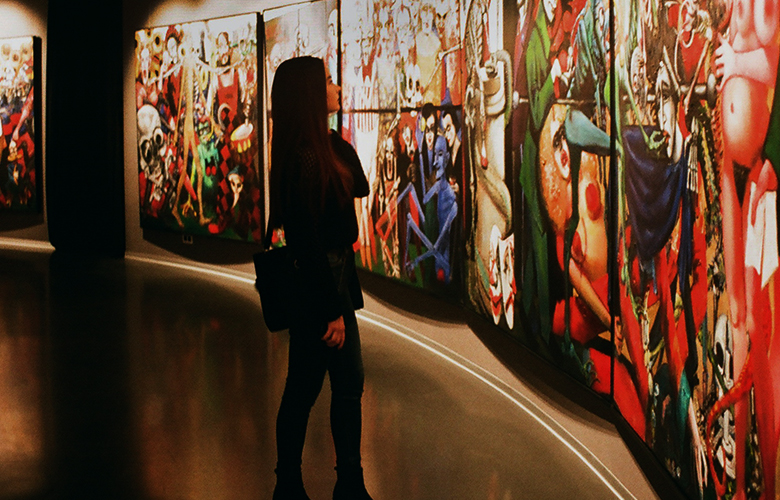
The COVID-19 pandemic is having a huge impact on visitor numbers to museums, attractions and tourist destinations around the world. Not to mention the all-important revenue that is attached to these. What can on-line and ‘virtual’ tours offer and how many organisations have grasped the opportunities that lie out there?
‘These are unprecedented times’ the politicians tell us.
They are indeed and for an industry that normally relies entirely on footfall into their buildings, the COVID-19 pandemic has had an immediate and, no doubt, long-lasting effect. No one was prepared for this; the entire entertainment business has had to adapt with virtually no notice.
As difficult as this has been for many organisations, there has been no shortage of creativity and skill in offering virtual tours and finding a way of monetising these. The museum, visitor centre and attraction business has always had to adapt to change – but normally over phased periods of many years. How are they going to get their visitors back and what are the challenges facing them?
A good question. Will people pay to visit a virtual tour? I discussed it with a good friend who is one of the great exponents of the museum world and he said that he probably wouldn’t. Interesting.
He said that the whole point of visiting is the experience, the enormity of it and the social interaction with other people, such as tour guides, demonstrators and members of the public. There’s no question about it of course, it cannot be the same as visiting in person, but organisations must find ways of staying relevant and engaging.
Even with a paid ‘entrance fee’ this will never cover the costs of the overheads that keep the museums going, no matter how many people sign up for it.
A virtual tour will, however, keep the internet search engine hits alive and remind people of what they can see when the museum opens again. Not ideal, but they have to find a way.
Inevitably – and sadly – some museums may end up closing their doors for good because they are unable to secure sufficient funding from local government or other sources.
Normally, content is the least of their problems. Museums have so many artefacts, interpretation boards and interactive displays available to them, it is usually a question of what to leave out rather than what to show.
In the situation that museums find themselves in now with no physical visitors, adapting attractive content is key to hooking visitors in to their virtual tours. There are a lot of museums that are doing that very effectively. Here are 10 of them that offer excellent content and a few words on why they really caught my eye:
Of course, many museums have had an on-line presence for some time, and that’s helped draw visitors to their physical buildings around the globe.
To be able to show content within their websites at any kind of quality or scale, a great deal of thought has gone into the design and the technology that is used.
Not very many years ago, only standard definition video was available which often had to be digitised from very old archive consumer video formats. These were all 4:3 ratio and while it gave the viewer/potential visitor a glimpse of what could be seen, it did not make for any kind of engaging experience.
Today, we have HD video, 360º viewable content, fly-through journeys, other forms of virtual reality, 4K ultra-high definition video with links to platforms such as YouTube and Vimeo as well as a whole series of social media interactions with Facebook, Twitter, Instagram and the like.
Hand-held smart devices are vital for the museum sector as more and more of the content is viewed from these. Easy navigation, menu-driven and object orientated methods of direction-finding within an app are an important part of the user experience – whether within the museum itself or viewing from home.
Out of all the technologies that museums have implemented, I would say that augmented reality (AR) is one of the most interesting concepts as it combines the real world with a virtual one. This is fine when you are actually in the museum building itself but what about when you are viewing at home? Would this ever be possible?
Well, with the fusion of AR and artificial intelligence (AI) there are many experiments currently under way to see if it would be possible to combine these technologies but working in a remote sense.
Manchester City, the English Premier League football club has previously experimented with AR, using the technology to create immersive and interactive match day programs. In 2019, the football club integrated AR into its stadium visitor experience, introducing an immersive tour in celebration of its 125th birthday.
Being able to achieve this while remotely viewing is an even more interesting proposition. On-line and home gaming developers will almost certainly play a part in this kind of implementation. That said, when things are back to normal, football clubs will want us to part with our money at the ground to view the match for real. But there is some appetite to combine different technologies in order to get the best of both worlds.
It has been made very clear to us all that this pandemic has been world-changing; it has affected the way we go about our lives, our business and our interactions. It’s not going to suddenly disappear and, with a flick of a switch, we can all go back to how everything was prior to COVID-19.
This new order of things means that the entertainment industry has to adapt as a whole, and museum, visitor centre and attractions venues specially. To ensure their own survival, they need to offer a wide range of new and innovative ideas for all ages to appreciate. With the devastating effects of the COVID-19 pandemic, this has meant that everyone involved in the industry has had to have a reset, a rethink and come up with new strategies that will work for all in the future.
How this will affect this sector in the longer term remains to be seen. However, having been put into the middle of this crisis, ‘outside the box’ thinking is flourishing. With the huge pool of talent available in the creative industries that we have around the world, there are going to be many more opportunities for the remote viewing of exhibits.
That said, we all want this to be over so that we can visit these attractions again in comfort and safety…

Also by News & Views by Dataton:
2020: State of the AV Industry.. then Coronavirus


The News&Views blog is created by Dataton, and is about multi-display software and surrounding technologies, media servers, content creation - basically anything within the AV industry that serves to enrich the audience experience! Dataton has provided outstanding products to the audiovisual industry for over 40 years and is the maker of the WATCHOUT production and playback system. WATCHOUT systems are used globally in performing arts venues for scenic projection – in theatre, dance, and musical performances. We first started publishing News&Views, with content reflecting the world of multimedia communication, back in the 80s!
Read Full Profile© 2021 TheatreArtLife. All rights reserved.

Thank you so much for reading, but you have now reached your free article limit for this month.
Our contributors are currently writing more articles for you to enjoy.
To keep reading, all you have to do is become a subscriber and then you can read unlimited articles anytime.
Your investment will help us continue to ignite connections across the globe in live entertainment and build this community for industry professionals.